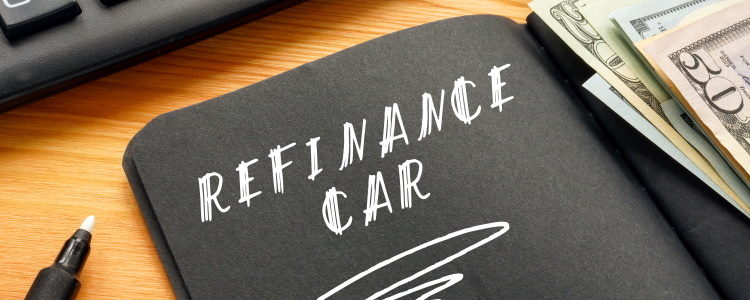Cosigners don’t get any rights to the vehicle they signed the loan for. However, if the cosigner is trying to take your car, it may be time to take some action.

Can My Cosigner Take My Car?
Cosigners and Ownership
 Cosigners can’t take the vehicle they cosigned for because their name isn’t listed on the title. A cosigner isn’t responsible for making the monthly payments, maintaining car insurance, or really anything else. Cosigners simply lend you their good credit score to help you get approved for the auto loan, and if you can’t make payments, the lender can require them to pick up the slack.
Cosigners can’t take the vehicle they cosigned for because their name isn’t listed on the title. A cosigner isn’t responsible for making the monthly payments, maintaining car insurance, or really anything else. Cosigners simply lend you their good credit score to help you get approved for the auto loan, and if you can’t make payments, the lender can require them to pick up the slack.
Since you’re the primary borrower on the vehicle and your name is listed on the car’s title, you have ownership rights. Your cosigner can’t come to your residence and take possession of the vehicle – even if they’re the ones making the car payments right now.
If you do default on the loan and the vehicle is repossessed, the cosigner still can’t take the car.
What If Your Cosigner Takes Away Your Car?
If your cosigner did somehow take your keys and your vehicle without permission, it’s considered theft. If you want to take action, you can report the car as stolen.
However, a better first step is probably contacting the cosigner and letting them know that they don’t have any ownership rights (if you want to maintain a relationship with them). You can ask them to return the vehicle and explain that their name isn’t on the title.
Can A Cosigner Sell Your Car?
If you ask a cosigner for help in qualifying for an auto loan, they don’t have any ownership rights to the vehicle, which means they can’t legally sell it. While a cosigner helps you qualify for a car loan by “lending” you a good credit score, they don’t get their name on the title, which means they have no ownership rights to the vehicle. The cosigner may have an obligation to the loan, and the lender can ask them to pay for it, but they can’t take possession of your car and sell it.
To legitimately sell a vehicle, the registered owner must sign over the title to the buyer. If your cosigner somehow gets your car and tries to sell it to someone else, the buyer can’t register the vehicle in their own name.
This is a form of title jumping, which is when you sell a car to someone else without registering it in your name first. If the cosigner takes your vehicle, doesn’t get their name on the title, and tries to sell it to someone else, it’s a felony in all 50 states.
If your cosigner is trying to sell your car, calmly inform them that they have no ownership rights to the vehicle and they can’t sell it. If tensions are becoming high between you and your cosigner, it may be time to remove them from the auto loan.
Removing A Cosigner From A Car Loan
If things are dicey with your cosigner, then it may be time to consider removing them from the auto loan. The easiest way to remove a cosigner is by refinancing.
Refinancing is when you replace your current loan with another one. You can work with your current lender or another one, but most borrowers look for another lender to refinance with.
You don’t need a perfect credit score to refinance your car loan – it just has to be good or better than it was when you first got the loan. Another common requirement of refinancing is that you’ve had the loan for at least one year.
Other common requirements for refinancing are:
- You’ve stayed current on payments throughout the loan
- You have equity or your loan balance is equal to the vehicle’s value
- Your car has less than 100,000 miles and is less than 10 years old
Most borrowers usually refinance to lower their loan payments. Since you’re replacing your current auto loan with another one, many borrowers try to qualify for lower interest rates or extend their loan to lower their payments. If your credit score has improved, you may even be able to get a better interest rate and remove your cosigner!
Can’t Refinance To Remove The Cosigner?
Refinancing isn’t in the cards for everyone. However, another efficient way to remove a cosigner is by selling the car. Cosigners don’t have to be present at the sale of the vehicle, since they don’t have to sign the title to transfer ownership.
If you sell the car and get an offer large enough to cover the entire balance of your loan, you and the cosigner can walk away from the auto loan scot-free.
However, many borrowers need cosigners because their credit score isn’t the best. If you want to sell your vehicle to remove your cosigner, but you’re worried you can’t get a car loan by yourself, consider a subprime auto loan for your next vehicle.
Bad Credit Auto Loans
 Since many traditional car lenders don’t work with borrowers who have poor credit histories or lower credit scores, they often ask them to bring a cosigner. But what if you don’t want a cosigner (or can’t get one) on your next auto loan? Enter subprime car loans.
Since many traditional car lenders don’t work with borrowers who have poor credit histories or lower credit scores, they often ask them to bring a cosigner. But what if you don’t want a cosigner (or can’t get one) on your next auto loan? Enter subprime car loans.
Subprime lenders are teamed up with special finance dealerships, and they operate remotely. When you apply for financing with a special finance dealer, you work with the special finance manager who acts as the middleman between you and the lender.
You need documents to prove you’re ready to take on an auto loan – typical things like check stubs, proof of residency, a valid driver’s license, a down payment, and other assorted items depending on your credit situation. If you qualify, the lender determines what your maximum car payment can be, and you choose a vehicle you qualify for from there.
What sets subprime auto loans apart from traditional car loans is that they assist borrowers in tough credit situations and offer the opportunity for credit repair. Some in-house financing dealerships that don’t check credit reports don’t report their auto loans, which means your timely payments don’t improve your credit score.
The best way to improve your credit score is by paying all your bills on time. Payment history is the most influential piece of the credit score pie. There are many lenders willing to work with bad credit borrowers, you just have to know where to look!
Finding A Car Dealership Near You
In order to make your search more effective, it's recommended that you do all your searching for a loan within two weeks. This is considered a rate shopping window, and all the inquiries made to your credit by the same type of lender will only ding your credit once, instead of multiple times.
The easiest way to search for a dealership is to know where to start. If your credit isn't in good shape, start by searching for dealerships that advertise bad credit financing, which is sometimes called special financing. If you have a specific type of vehicle in mind, start by researching whether or not that brand is known for financing bad credit. Brands such as Ford, Chevy, Hyundai, and Kia, for example, are known for working with borrowers who have lower credit scores.
Here at Auto Credit Express, we’ve already done the searching, and we’ve created a nationwide network of dealers that are signed up with subprime lenders. To get matched to a dealership in your area, with no cost and no obligation, you can fill out our car loan request form. If you'd rather do the searching on your own, know that the longer you spread out your search the more damage your credit score could take.

Senior Automotive Financing Editor
Meghan has been writing professionally for over 25 years. She is expertly versed in automotive special financing and pricing analysis, having published hundreds of articles on Auto Credit Express and its sister sites, CarsDirect, and The Car Connection. Read more
Suggested Posts For You
Receive Free Updates
Get the latest credit tips, resources and advice delivered straight to your inbox.













